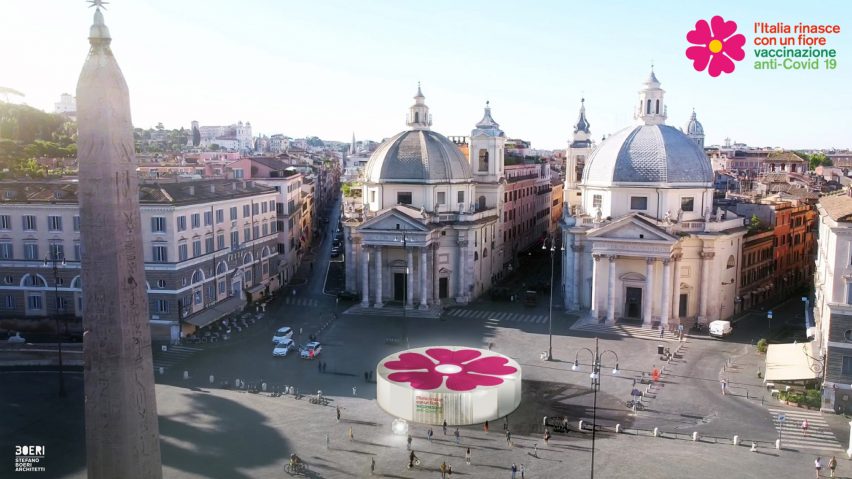
Stefano Boeri designs prefabricated vaccination pavilions for 1,500 Italian squares
Architect Stefano Boeri has designed prefabricated timber and fabric pavilions, which are set to house Covid-19 vaccination stations in piazzas across Italy from the first half of January.
Around 1,500 of the structures will be set up over the following months at the direction of Domenico Arcuri, the country's special commissioner for the Covid-19 emergency.
These will act as distribution sites for the 3.4 million Pfizer vaccine doses, which Italy is expected to receive in January after suffering the most coronavirus deaths out of any European nation this year.
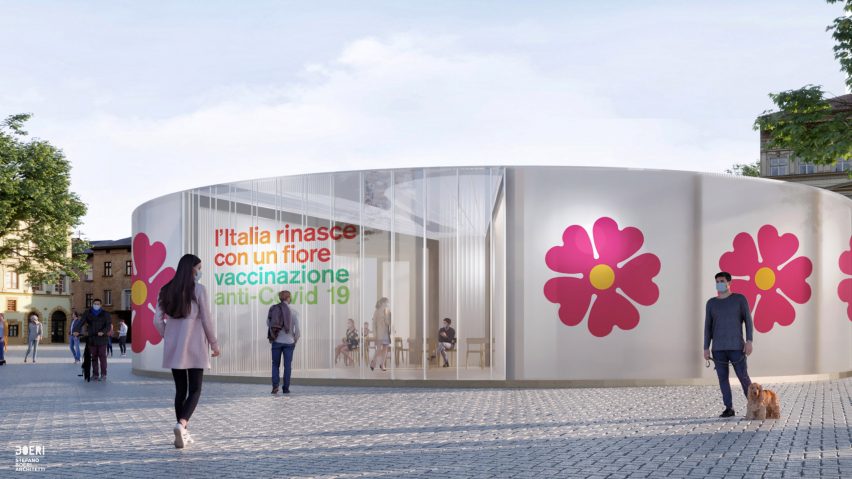
In order to facilitate a swift rollout, Boeri designed the pavilion's circular base and frame to be prefabricated from structural wood. This skeleton is encased in an envelope of water-resistant textile, which the architect claims is entirely recyclable.
On the interior, spaces are separated through a system of flexible textile walls, which is similarly prefabricated and designed to offer transparency while absorbing sound.
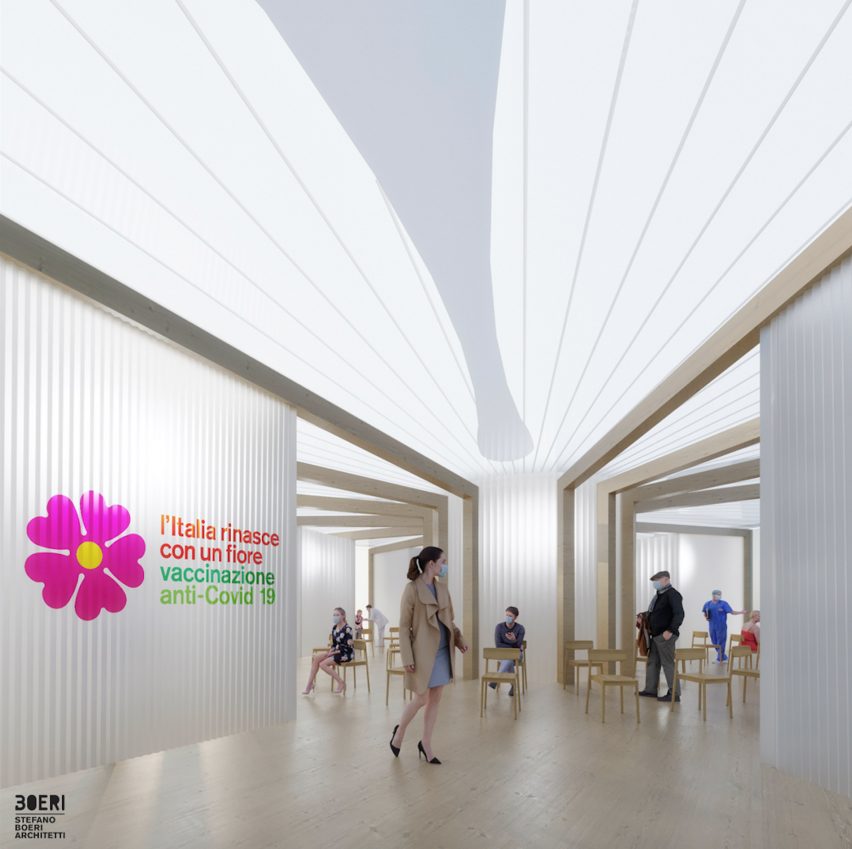
"The Politecnico of Milano will start to work on a prototype in order to optimise the prefabrication so that the pavilions can be easily and quickly placed all over Italy," Boeri told Dezeen.
"The main reason is to increase capacity, to speed up the process of vaccination and to reach the entire Italian population," he continued. "Of course, providing a temporary pavilion in public areas can also help to spread the message: let's get vaccinated."
"Italy's public life is in our piazzas. We need to make sure that these pavilions will be reachable, comfortable and places that the community consider, for a period of time, part of their lives in order to defeat Covid-19."
Designed in collaboration with a team of consultants, the pavilion is organised around a central core, housing service areas for healthcare workers including toilets as well as changing and storage rooms.
To mitigate the environmental impact of setting up a slew of temporary pavilions, Boeri designed them to be easily dismantled and reused elsewhere.
In addition, the structure is intended to be energy self-sufficient with a ring of solar panels on the roof designed to provide enough electricity to meet the needs of the whole pavilion.
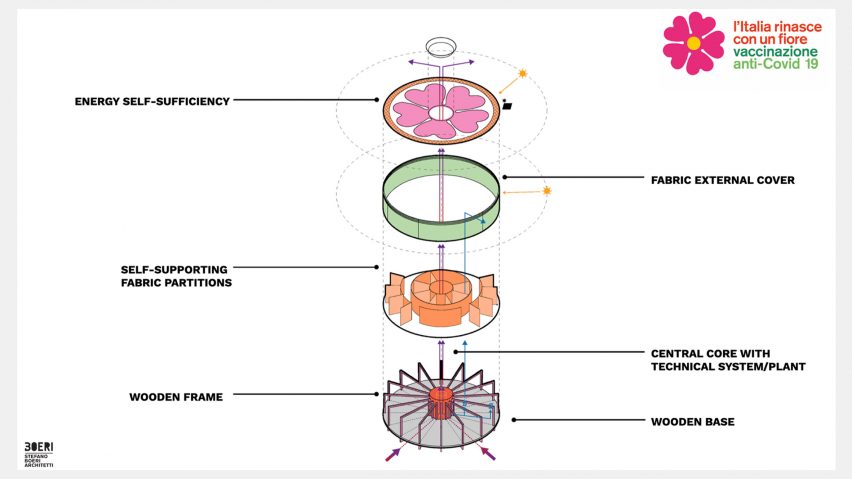
A large, pink primrose will be emblazoned on the exterior walls and the roof of the structure, allowing Italy's historic piazzas to "visually blossom" once again.
"With the image of a springtime flower, we wanted to create an architecture that would convey a symbol of serenity and regeneration," Boeri said.
"Getting vaccinated will be an act of civic responsibility, love for others and the rediscovery of life. If this virus has locked us up in hospitals and homes, the vaccine will bring us back into contact with life and the nature that surrounds us."
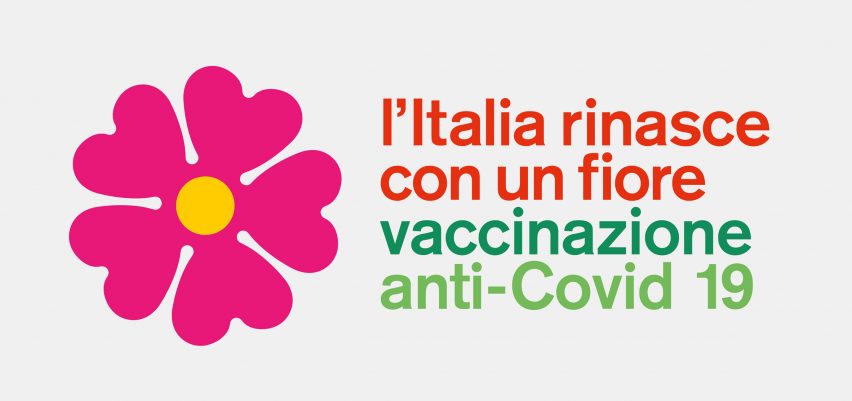
Boeri's graphic flower design will also act as the logo for the country's communications campaign around vaccination. Under the slogan "With a flower, Italy comes back to life", it will feature in government messaging as well as on "information totems" that will be set up in public spaces to educate citizens about the process.
This weekend, Italy surpassed the UK to become the country with the highest coronavirus death toll in Europe, totalling 64,520 people.
Commissioner Arcuri has said that by September 2021, a significant number of Italians who want to be vaccinated against the virus should have received their shots.
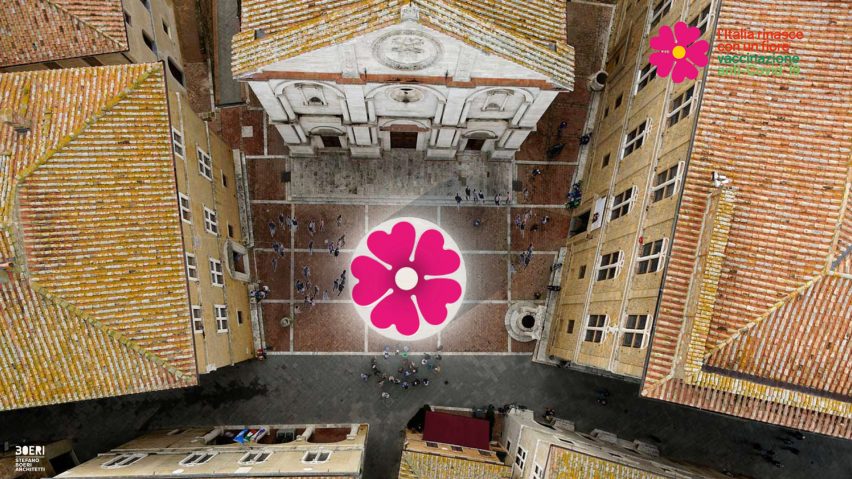
In this hope, Italy's Salone del Mobile fair recently announced that the event would be moved from its usual April time slot to September.
Architecture practice NBBJ has also proposed setting up prefabricated drive-through clinics, where patients could get treated and vaccinated against coronavirus without leaving their cars.
Set in hospitals' existing parking garages, these would accelerate the vaccine roll-out while allowing visitors to maintain a safe social distance from other patients.
Earlier this year UK architect Waugh Thistleton unveiled a concept for mobile vaccination clinics in shipping containers. They claim these could be used to vaccinate the entire population in 16 weeks.